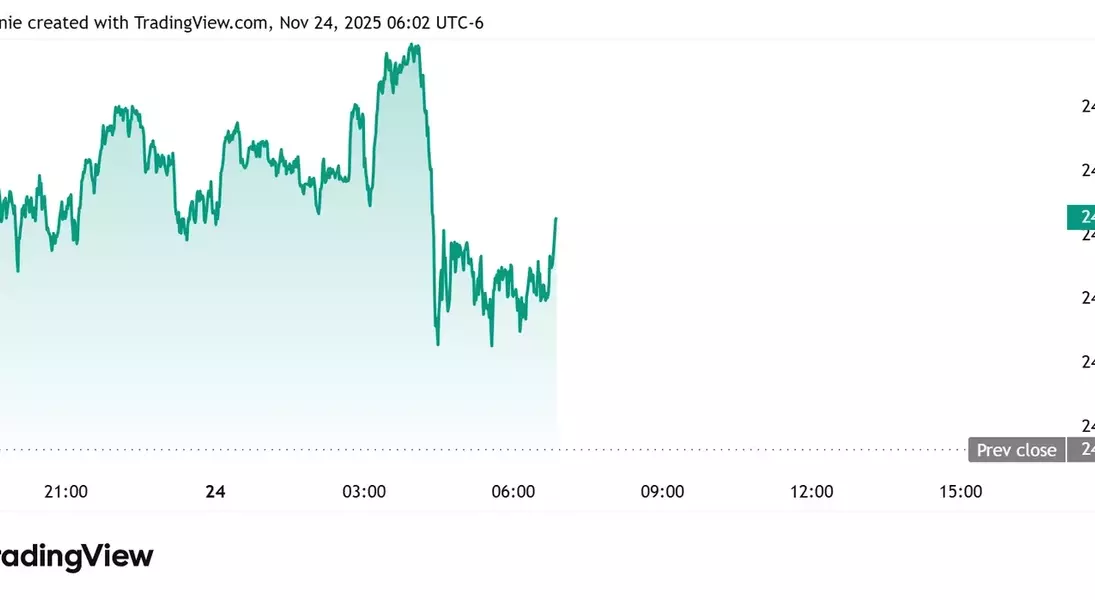






This week saw a notable shift in market sentiment, with stock futures indicating an upward trend, largely driven by growing investor confidence in a potential interest rate cut by the Federal Reserve in December. This optimism follows remarks from New York Fed President John Williams, signaling a possible rate reduction in the near future. Concurrently, JPMorgan has advised investors to consider "bargain hunting" among select tech stocks, suggesting that recent declines due to AI spending concerns may present buying opportunities. However, the market also grapples with the upcoming holiday schedule, which will see stock and bond markets close for Thanksgiving and operate on a shortened schedule for Black Friday, providing a temporary pause for traders after a dynamic period.
Amidst these financial movements, individual company performances highlight diverse fortunes. Alphabet's Gemini 3 AI model propelled its stock to significant gains, while Novo Nordisk experienced a decline following disappointing trial results for its Alzheimer's drug. The cryptocurrency market also showed signs of recovery, with Bitcoin rebounding from a weekend low. These developments underscore a complex market environment influenced by monetary policy expectations, sector-specific innovations, and seasonal trading patterns, requiring investors to navigate carefully through both established trends and emerging opportunities.
Federal Reserve's Monetary Policy and Market Outlook
Stock futures saw an upward movement as the trading week began, primarily fueled by strong investor expectations of a Federal Reserve interest rate reduction in December. The CME FedWatch tool currently indicates a substantial 75% probability of a quarter-percentage point cut next month. This heightened anticipation follows recent statements from New York Fed President John Williams, who alluded to his potential support for an additional rate cut by the central bank in the immediate future. Such a move is widely perceived as a stimulant for economic growth and could offer a more favorable borrowing environment, thereby positively impacting corporate earnings and overall market valuations. Despite a preceding week that saw major indexes like the Nasdaq, S&P 500, and Dow Jones Industrial Average experience significant declines, largely attributed to investor anxieties over artificial intelligence spending and the valuation of prominent tech firms, the prospect of an interest rate cut has instilled a renewed sense of optimism among market participants, leading to a bounce in futures trading.
This renewed confidence in a December rate cut is shaping market strategies, with traders keenly observing any further signals from the Federal Reserve. The previous week's downturn, which saw Nvidia's shares fall despite stellar earnings, highlighted the market's sensitivity to perceived bubbles in the AI sector. However, the potential for cheaper credit has overshadowed these concerns, redirecting investor focus towards growth opportunities. As a result, the market's immediate trajectory appears closely tied to upcoming Federal Reserve communications and economic data, particularly inflation reports and employment figures, which will further inform the central bank's policy decisions. This delicate balance between controlling inflation and fostering economic expansion remains a critical determinant for market performance in the coming weeks, especially leading up to the holiday season when trading volumes typically decrease.
Tech Sector Dynamics and Holiday Trading Schedule
In the evolving tech landscape, JPMorgan analysts have pinpointed 15 tech stocks that they believe are undervalued opportunities for investors, suggesting that the recent declines in hardware and networking companies, spurred by fears of an "AI bubble," have created attractive entry points. These selected stocks have seen their values drop by 10% to 30% from their recent peaks, with one experiencing an almost 40% reduction, indicating that much of the perceived risk has already been factored into their current prices. Concurrently, significant individual stock movements are observable: Alphabet's shares surged by over 8% last week and an additional 3.5% pre-market, driven by the launch of its advanced AI model, Gemini 3. Conversely, Novo Nordisk's U.S.-listed shares fell 10% after its Alzheimer's drug trial failed to demonstrate superiority over a placebo. Elsewhere, a proposed merger between Performance Food Group and US Foods Holdings was called off, resulting in differing stock performances for both companies.
Adding another layer of consideration for investors is the upcoming holiday trading schedule. The U.S. stock and bond markets will be closed on Thursday for the Thanksgiving holiday. Trading resumes on Friday, known as Black Friday, but with an abbreviated schedule: the stock market will close at 1 p.m., and the bond market at 2 p.m. Further holiday adjustments include closures for Christmas Eve (with early closings on December 24), Christmas Day, and New Year's Day, with modified hours on New Year's Eve. These holiday-induced trading pauses can lead to reduced liquidity and increased volatility, a factor that active traders must account for. Beyond individual stock performance and holiday schedules, the broader market indices—Nasdaq, S&P 500, and Dow Jones Industrial Average—are showing fractional to moderate gains in pre-market trading, reflecting a cautiously optimistic start to the holiday-shortened week, particularly as investors continue to weigh the implications of potential interest rate adjustments and ongoing technological advancements in key sectors like AI.
